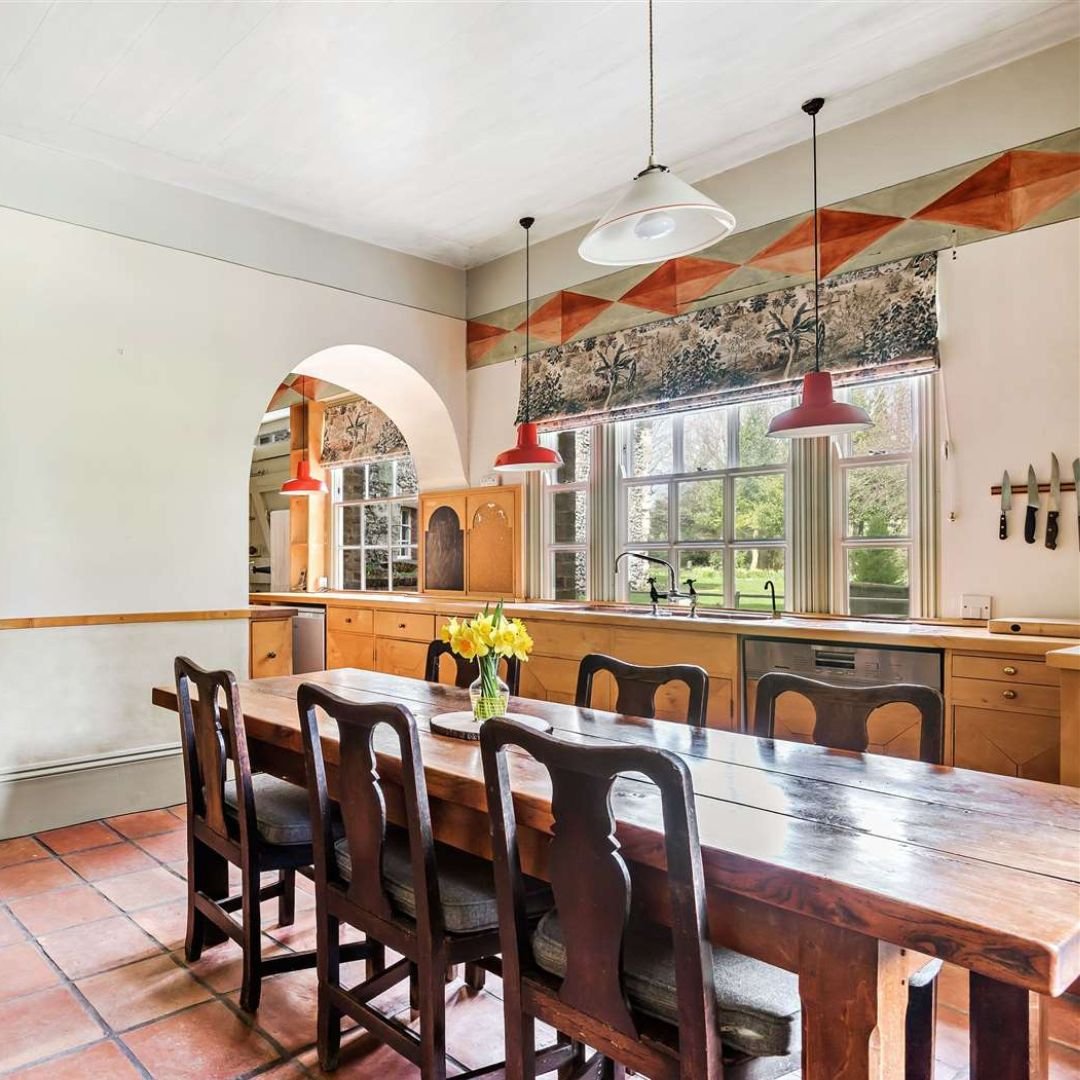Luddesdown Court, Kent: 1,000 Year-Old Manor Said to be The Oldest House in England
Luddesdown Court in Kent, a 1,000-year-old manor house, is said to be the oldest house in England.
Photo: Savills
This exceptional building boasts a remarkable history as well as many original and historical features.
Dating back as far as the 1000-1100s, this stunning property, which was once owned by William the Conqueror's half-brother, is valued at £2.45million.
William the Conqueror was the first Norman King of England, reigning from 1066 until his death in 1087.
Photo: Savills
In 1931, Knight Frank’s Arthur J. Burrows described Luddesdown Court as ‘the oldest court lodge in Kent’ and ‘presumably one of the most ancient continuously inhabited domestic buildings in the kingdom’.
The property is Grade I listed - the highest heritage designation available in the U.K.
According to Historic England, which is responsible for deciding which buildings merit this status, its oldest flint-built section dates from the early 13th century.
Luddesdown Court has been renovated and remodelled a number of times over the years and it showcases an array of features from different centuries.
It showcases striking features, including a Tudor chimney, a Norman fireplace, exposed beams, and exquisite stonework.
Photo: Savills
However, recently, it has been brought into the modern era with a large 3,000 square foot indoor swimming pool.
The former manor house is understood to have once been owned by William the Conqueror’s half-brother, Odo, born around 1035, until his exile for suspected treason in 1082.
The Earl of Kent, as Odo was titled before being stripped of his nobility, is thought to have commissioned the Bayeux Tapestry, which depicted the 1066 Norman conquest of England.
His countryside residence was put on the mark last year, available to rent for £6,000 per month.
It was previously on the market in November 2019, when it fetched £2.45m, according to independent property valuations company, The Move Market.
Photo: Savills
Subsequent owners, according to research by Gravesham Borough Council, also include the powerful and wealthy Aymer de Valence, born in around 1275 and a close adviser to King Edward II.
One of the wealthiest and most powerful men of his age, Aymer de Valence was a central player in the conflicts between Edward II of England and his nobility, particularly Thomas 2nd Earl of Lancaster.
Another owner was Owain Glyndŵr, born circa 1359, a Welsh prince and nationalist who fought to free his country from English rule.
The Great Hall is an essential feature of this historic property, supported by oak beams, with five large windows across the vaulted room.
Further important features of this house include the Tudor chimney, Norman corbelled fireplace, and perhaps most importantly, the unique murals scratched into the plaster of the Great Hall and two of the five bedrooms.
Photo: Knight Frank
At the end of the Great Hall is a staircase which leads to a Minstrels’ Gallery.
Externally, the extensive gardens surrounding the main house are mainly situated to the South West.
Outside, the property is surrounded by 23 acres of formal gardens, offering panoramic views of the countryside.
There is a private walled rose garden, an established orchard with a small paddock beyond, a separate walled garden, and two small ponds.
Luddesdown, which is part of the North Downs Area of Outstanding Natural Beauty, is located in a dry valley to the south of Gravesend.
Luddesdowne Church, dedicated to St Peter and St Paul, is situated adjacent to the Manor house at the former manorial centre.
The original Saxon church was mentioned in the Doomsday Book of 1086 but this was replaced by a stone Norman building in the 12th century.
Today, the Manor House is a private residence and not open to the public.
When it was listed last year, John Roberts, lettings director at Savills Sevenoaks said: "We expect it to appeal to a couple or family in search of a remarkable rental property.”
If you enjoyed this blog post, please follow Exploring GB on Facebook for daily travel content and inspiration.
Don’t forget to check out our latest blog posts below!
Thank you for supporting Exploring GB.













